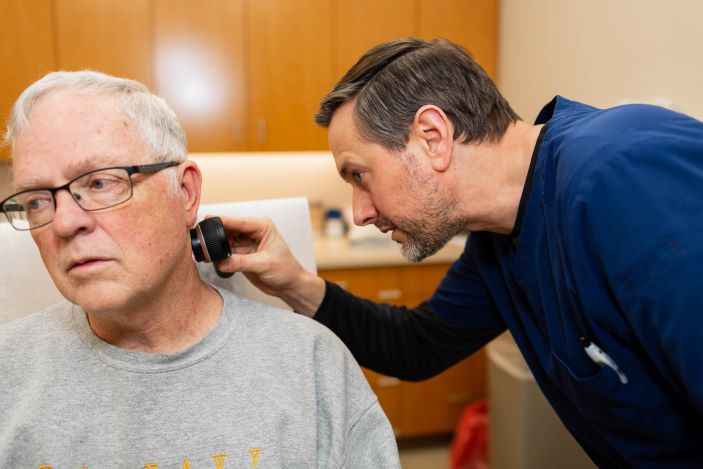I recommend anyone who has skin to get a full-body skin exam! If you are 50 years old and have not had a skin exam, we encourage you to schedule one right away.
At your visit, you can discuss with your provider the frequency of skin exams based on your age, past sun exposure, amount of sun damage to your skin, tanning bed use, personal and family history, medications you take, and more. Depending on these factors, we recommend a full-body skin exam every 1 to 3 years.
Non-melanoma skin cancers – basal cell and squamous cell carcinomas – are the most common type of skin cancer. These skin cancers tend to grow quickly and are firm to the touch compared to surrounding skin. They can bleed or scab and are usually found on sun-exposed skin.
In contrast, melanomas can happen anywhere on the body. Melanomas are usually dark brown or black and are flat within the skin. However, there are rare variants that are skin-colored or feel like a firm nodule.
To spot melanoma, watch for the ABCDEs of melanoma.
- A is for Asymmetry: One half of the spot is not like the other half.
- B is for Border: Irregular, scalloped or poorly defined border.
- C is for Color: Varying color from one area to the next such as shades of tan, brown or black, or areas of white, red or blue.
- D is for Diameter: Melanomas are usually the size of pencil eraser, when diagnosed, but they can be smaller.
- E is for Evolving: The spot looks different from the rest or is changing in size, shape or color.
If you notice any spot that looks suspicious, schedule an appointment with a dermatology provider or your primary care provider right away. Rapid diagnosis and prompt treatment lead to the best results.
To learn how to do a self-exam, visit American Academy of Dermatology Spot Skin Cancer.

